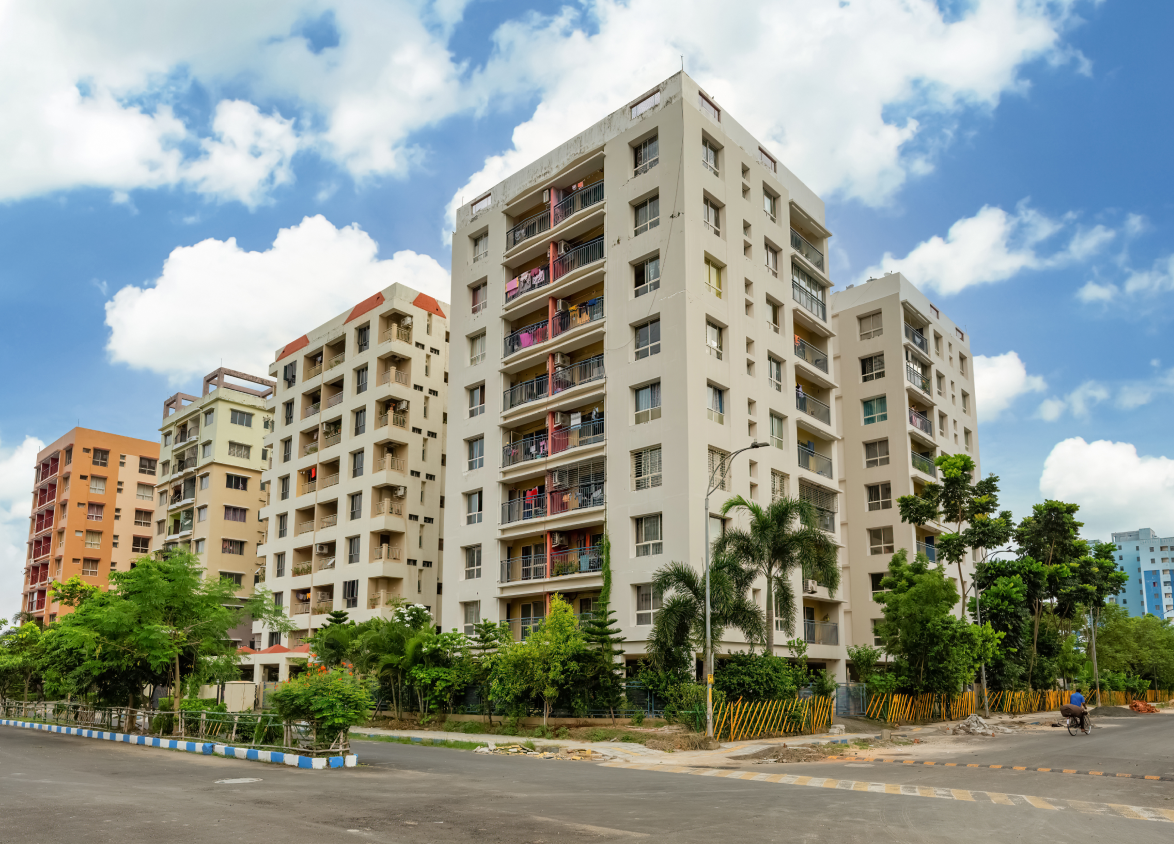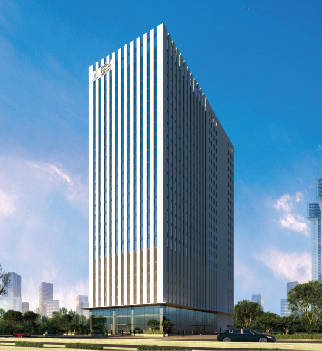
Residential
What is FSI (Floor Space Index) in Real Estate?
December 19, 2023
Buying a home or plot is one of the critical milestones in everybody’s life. It entails a lot of effort, much deliberations and most importantly a sizable investment. During the purchase journey, homebuyers often encounter real estate jargon which they find hard to comprehend. However, a proper understanding of these terms is essential to ensure that people know what exactly they get in exchange for their residential property investment.
In this respect, the floor space index (FSI) is a critical real estate term that every investor must have a deep understanding of for their own benefit.
What is FSI?
FSI is a pivotal factor in real estate investment dynamics. It signifies the maximum construction permitted on a given land parcel. FSI quantifies the ratio between the constructed floor area and available land space. Typically governed by the National Building Code, FSI is overseen and controlled by municipal or local authorities under state governance.
The concept of FSI in real estate serves as a barometer reflecting a location's appeal, population density and environmental considerations. Homebuyers must note that a high FSI value is indicative of reduced open spaces in their plot or homes they are planning to buy.
Simply put, if your plot or the apartment has an extremely high FSI, you may end up living in a concrete jungle. Meanwhile, areas with too low FSI values present commuting and affordable housing challenges.
Importance of FSI
An uncontrolled construction of buildings on a plot will result in extreme congestion and traffic density, negatively impacting the residents' quality of life. FSI plays a pivotal role in shaping the development density of an area.
- By controlling the ratio of built-up area to open spaces, FSI maintains parks, greenery and recreational areas within urban environments
- FSI influences the stress on infrastructure, such as transportation networks, water supply and sewage systems, ensuring they can adequately support the developed areas
- The concept impacts property values. Higher FSI is often associated with increased potential for development and higher property prices in desirable areas
How Do You Calculate the FSI Value of a Property?
The floor space index calculation involves determining the ratio of the total covered area of a building to the entire area of the plot of land it occupies. Here’s a step-by-step guide:
- Calculate the total covered area of all floors, including basements, mezzanines and other habitable spaces. Exclude areas like staircases, specific utility spaces and sometimes common areas, as they might not count toward the FSI/FAR
- Determine the total area of the land where the building stands. This is usually measured in square feet or square metres
- Divide the total covered area by the plot area
The floor space index formula looks like this:
FAR = total floor area of all floors of the building/plot area
FSI = total floor area of all floors of the building/plot area x 100
For instance, if the total covered area of a building is 10,000 square feet, and it occupies a plot of land measuring 5,000 square feet, the calculation would be:
FSI/FAR = 10,000 sq ft (Total Covered Area) / 5,000 sq ft (Plot Area) = 2.0
This result indicates that the FSI/FAR for this property is 2.0, which means that the constructed area is twice the size of the plot area.
It is important to note that FSI calculations might vary based on local building regulations, zoning laws and specific guidelines set by municipal or local authorities.
What is Premium FSI?
A developer can increase the limit of a plot's permissible FSI in exchange for a fee to the local authority, termed the Premium FSI fund. The enhanced limit is called the premium FSI. However, the plot must have an adjacent road with at least 30 ft width to be eligible for a premium FSI value.
A 20% extra FSI is attainable for plots located near roads spanning 30 to 40 ft in width, allowing construction up to 20% beyond the standard permitted FSI. Should the road widen to 40 to 60 ft, a 30% premium FSI becomes accessible, enabling a 30% increase in the construction area. Plots adjacent to roads exceeding 60 ft wide can avail of a 40% premium FSI, facilitating a 40% expansion in permissible construction.
What is FAR?
Floor Area Ratio (FAR) denotes the relationship between a building’s total floor area and the land area on which it stands. This ratio is computed by dividing the building's total or gross floor area by the gross area of the plot.
The formula for FAR calculation is:
The total covered area on all floors, gross floor area/ area of the plot
Each city has a specific space demarcated for construction of buildings. Exceeding the earmarked space imposes undue stress on the infrastructure, negatively impacting the entire neighbourhood. This safety threshold, akin to the safe load factor, is embodied in the concept of FAR.
The variation in FAR is influenced by population dynamics, developmental trends and construction activities. Moreover, the nature of the land itself impacts FAR, with different categories like industrial, residential, commercial, agricultural and non-agricultural spaces having distinct safe load factors, thereby resulting in varying FARs. To manage this, governments implement regulations and restrictions that delineate the permissible FAR for different zones and land uses.
Key Differences between FAR and FSI
The FAR and FSI metrics, although similar, hold distinct significance in determining the permissible extent of construction, impacting the layout and density of buildings within a given plot.
While both FSI and FAR measure the ratio of built-up area to plot area, the former typically includes more components, such as balconies, basements and setbacks, compared to the latter.
FSI often varies between regions and cities, whereas FAR might have specific interpretations within certain urban planning guidelines.
What Impacts FSI?
Here is a list of the factors that impact FSI in real estate:
Locality
Urban areas closer to the city centre tend to possess higher FSI values than suburban and outlying localities. This variance primarily arises from the limited availability of open land within the core of cities. It necessitates higher FSI to accommodate construction and development in these densely populated areas.
Plot Size
In certain regions, larger plots often enjoy a higher FSI than smaller ones. This strategy encourages vertical development in cities facing land scarcity, promoting efficient space utilisation within constrained urban environments. Builders have capitalised on this real estate optimisation trick to develop premium housing estates like the upcoming Brigade Sanctuary project. This residential venture is being built across over 14 acres of land. It boasts an extensive green buffer zone and all possible modern-day amenities to provide a holistic living experience for its residents. In addition to these developments, Brigade Icon, strategically located on Mount Road, Chennai, offers both commercial and residential spaces.
Width of Roads
The FSI in certain regions is determined by the width of the road where the plot is situated. Generally, wider roads correspond to a higher permissible FSI.
Importance of FSI for Real Estate Developers
For real estate developers, a higher FSI is equivalent to more scopes of construction, thereby more profit. However, a builder does not necessarily have to walk the way of a premium FSI. A strategic building blueprint will let them achieve a major portion of the value they would get from a land with a premium FSI label. Vertical buildings like highrises let developers erect more structures within finite acres of land, increasing their portfolio of offering for investors.
FSI is a crucial parameter that developers consider while determining the economic feasibility of a real estate project. It influences the cost-benefit analysis by enabling builders to assess the potential returns against the investment in land and construction.
Ultimately, a deep-dive understanding of FSI is the key for developers to construct more attractive and legally compliant projects compared to competitors, enhancing market competitiveness.
Conclusion
Understanding FSI is pivotal in comprehending the dynamics of real estate development. It is a crucial parameter dictating the extent of constructing buildings on land. FSI's significance lies in its multifaceted impact—regulating density, preserving open spaces and steering sustainable growth.
MUST READ
Looking for something specific?
We'd be delighted to help you.








































































































































































































































































































































































































































